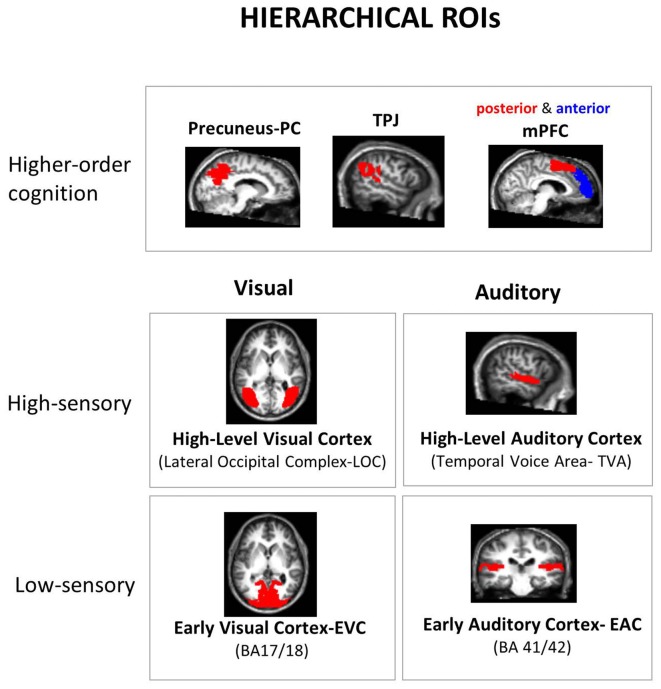Figure 2.
Hierarchical regions of interest (ROI). A priori ROIs were selected according to the hierarchical organization of the neural systems underpinning the processing of the manipulated dimensions: low and high-level sensory areas in each sensory modality and higher-order “mentalizing network” areas. All ROIs were defined using independent masks, either from anatomical atlas or functional parcels from other laboratories: Broadman’s Areas (BA) for low-level sensory areas and Precuneus (PC), “Temporal Voice Areas” (TVA) from Belin’s lab (Pernet et al., 2015; http://neurovault.org/collections/33/), Lateral Occipital Cortex (LOC) from Kanwinsher’s lab (Julian et al., 2012), and parcels from functional connectivity studies for medial Prefrontal Cortex (mPFC; anterior vs. posterior mPFC: amPFC vs. pmPFC; Sallet et al., 2013) and Temporo-Parietal Junction (TPJ; Mars et al., 2011; only right-hemisphere parcels are available for the latter two ROIs). The final subject-specific ROIs were made by a conjunction of these predefined ROI masks with all the active voxels (details in “Materials and Methods” section).

